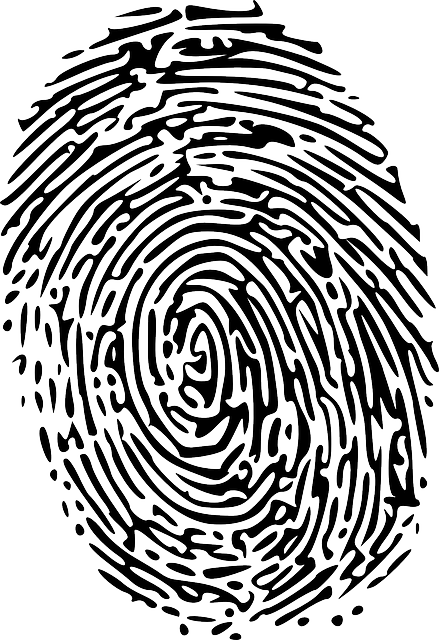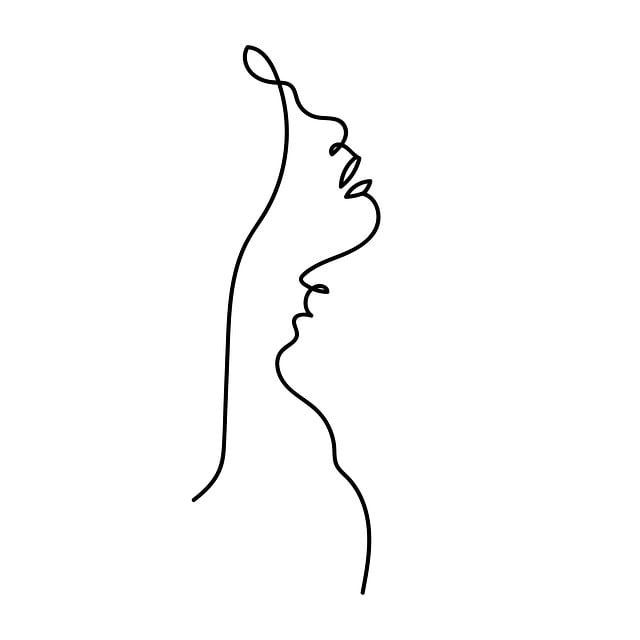Botox is a top non-surgical treatment for mitigating signs of aging, particularly prominent forehead lines and frown lines, by temporarily paralyzing targeted muscle groups. It's derived from bacteria and works by blocking nerve signals that trigger muscle contractions, smoothing the skin's surface. While safe when administered by a qualified professional, repeated injections over time may carry risks such as muscle weakness or asymmetry. Regular dermatological follow-ups are crucial. Long-term use may also lead to temporary side effects like redness, swelling, and headaches. Choosing a qualified injector with experience in aesthetic botulinum toxin injections is vital for positive outcomes. Consistent, moderate injections from a qualified professional are key to maintaining youthful appearance. Monitoring for allergic reactions and keeping treatment records are essential. Alternatives include dermal fillers, microneedling, laser resurfacing, and at-home skincare routines. The future of Botox for forehead lines and frown lines looks promising with advancements in technology and personalized medicine.
“Uncover the secrets to achieving a youthful complexion with safe, prolonged Botox use. This comprehensive guide delves into the world of Botox as a solution for forehead lines and frown lines, exploring its mechanism in reducing facial wrinkles effectively. We navigate safety considerations, potential side effects, and the importance of choosing an experienced injector. Learn about building a safe routine, managing allergic reactions, and alternative treatments. Discover future trends shaping the safe application of Botox for lasting results.”
Understanding Botox for Forehead Lines and Frown Lines

Botox has become a popular non-surgical treatment option for addressing signs of aging, particularly in the form of forehead lines and frown lines. These treatments involve injecting a small amount of Botox into specific muscle groups to temporarily relax them, reducing the appearance of wrinkles. By blocking nerve signals that cause muscles to contract, Botox smooths out the skin’s surface, providing a more youthful and relaxed look.
For individuals seeking to prevent or minimize existing forehead lines and frown lines, Botox offers a safe and effective solution. It is particularly beneficial for those who want to avoid more invasive cosmetic procedures while still achieving aesthetically pleasing results. Understanding how Botox works on these specific areas of expression can help individuals make informed decisions about their skincare routines and overall well-being.
How Botox Works in Reducing Facial Wrinkles

Botox, a protein derived from bacteria, has revolutionized skincare by offering a safe and effective solution for reducing facial wrinkles. When injected into specific muscles, Botox blocks the nerve signals that cause those muscles to contract, which is the primary contributor to wrinkle formation. Specifically, for areas like the forehead and frown lines, Botox injections relax the glabellar muscles, preventing them from contracting and forming these unwanted lines over time.
The mechanism of action makes Botox particularly effective for treating dynamic wrinkles, which are caused by repeated muscle contractions. By targeting these specific muscles, Botox can help prevent the deep grooves and creases that become more pronounced with age or certain facial expressions. This non-surgical approach to skincare has gained significant popularity due to its minimal downtime, natural results, and prolonged effects, making it a preferred choice for those seeking to combat the signs of aging gracefully.
Safety Considerations for Long-Term Botox Use

When considering Botox for prolonged use, particularly for the treatment of forehead lines and frown lines, safety should be a top priority. While Botox is generally well-tolerated when administered by a qualified professional, long-term effects can vary. It’s crucial to understand that repeated injections over an extended period may increase the risk of complications such as muscle weakness, asymmetry, and in rare cases, more serious issues like difficulty swallowing or breathing. Regular follow-ups with a dermatologist are essential to monitor these potential side effects and adjust treatment plans accordingly.
Additionally, the decision to continue Botox for prolonged periods should be made after careful consideration of individual health history and personal goals. Open communication with your healthcare provider is key to ensuring safety and achieving desired aesthetic results. They can guide you on the appropriate frequency and dosage, tailored to your specific needs, thereby minimizing risks while maximizing the benefits of Botox for forehead lines and frown lines over time.
Side Effects and Complications of Prolonged Botox Injections

While Botox is widely known for its ability to smooth out forehead lines and frown lines, prolonged use may lead to side effects and complications. Some common temporary issues include mild redness, swelling, or bruising at the injection site, which usually subside within a few days. In rare cases, patients might experience more severe reactions, such as headaches, nausea, or difficulty swallowing.
Long-term Botox use can also result in asymmetry of facial expressions, where one side of the face appears more relaxed than the other. This imbalance can occur if muscle activity is significantly reduced on one side due to repeated injections. Another potential complication is the development of a “botox hangover,” characterized by temporary weakness or drooping of facial muscles, which can last for several days after treatment. It’s essential for individuals considering prolonged Botox treatments to be aware of these possibilities and discuss them with their healthcare provider.
Choosing a Qualified and Experienced Injector

When considering Botox for forehead lines and frown lines, one of the most critical factors in ensuring safety and effectiveness is selecting a qualified injector. It’s essential to look for professionals who have extensive experience with botulinum toxin injections, specifically for aesthetic purposes. This expertise includes knowledge of facial anatomy and the ability to administer Botox precisely, minimizing risks and side effects.
Reputable practitioners will often hold certifications from recognized medical bodies and stay up-to-date with the latest research and techniques. They should also be willing to discuss your individual concerns and goals openly, providing a personalized treatment plan. Choosing an injector who fosters trust and transparency can significantly contribute to a positive outcome, enhancing your confidence in the long-term use of Botox for managing expression lines.
Building a Safe Routine for Regular Botox Treatments

Building a safe routine for regular botox treatments, especially for targeting forehead lines and frown lines, is key to maintaining youthful appearance without adverse effects. It’s crucial to establish a consistent schedule with a qualified medical professional who understands your specific needs. Regular, moderate injections can prevent severe wrinkles from forming while still allowing for natural facial expression.
This routine should incorporate pre-treatment preparations like staying hydrated and avoiding certain medications that could increase bleeding risk. Post-treatment care involves resting for a few hours, applying cold compresses, and following doctor’s advice on pain management. By adhering to this disciplined approach, you can enjoy the benefits of botox for forehead lines and frown lines without the worry of long-term side effects.
Monitoring and Managing Potential Allergic Reactions

When considering Botox for forehead lines and frown lines, it’s crucial to understand that, despite its widespread safety profile, allergic reactions can occur. Monitoring is key; individuals should observe any unusual reactions after treatment, such as redness, swelling, or itching at the injection site. If these symptoms persist or worsen beyond a few days, medical attention is necessary.
Healthcare professionals recommend regular check-ins to manage these potential side effects and ensure patient safety. This includes assessing the treatment area, addressing any concerns, and providing guidance on managing mild reactions. Additionally, keeping a record of previous treatments and documenting any changes can help in identifying patterns and making informed decisions about future Botox injections for optimal results.
Alternative Treatments to Consider for Long-Lasting Results

If you’re seeking long-lasting results for forehead lines and frown lines, it’s understandable to want alternatives to Botox. While Botox has established itself as a popular choice for non-invasive wrinkle reduction, there are several other treatments worth exploring. Dermal fillers, for instance, offer a natural enhancement by plumping and filling in facial contours, providing a similar effect to Botox but with potentially longer-lasting results.
Microneedling and laser resurfacing are also effective options. These procedures stimulate collagen production, improving skin texture and reducing the appearance of fine lines and wrinkles. Additionally, certain at-home skincare routines incorporating retinoids or peptides can provide significant benefits over time, making them valuable components in a comprehensive anti-aging strategy.
Future Trends in Safe, Prolonged Botox Applications

The future of safe, prolonged Botox applications looks promising with advancements in medical technology and a growing understanding of muscle dynamics. Researchers are focusing on developing more precise injection techniques to further minimize risks and maximize the effectiveness of Botox for forehead lines and frown lines. One area of interest is the use of innovative delivery systems that can target specific muscle groups more accurately, reducing side effects and extending the treatment’s duration.
Additionally, there is a growing trend towards personalized medicine, where treatment plans are tailored to individual needs and lifestyle. This approach ensures that Botox injections are administered optimally, addressing specific concerns while minimizing unnecessary exposure to the toxin. As technology advances, it’s expected that these trends will lead to more efficient, safe, and long-lasting solutions for cosmetic treatments involving Botox.
